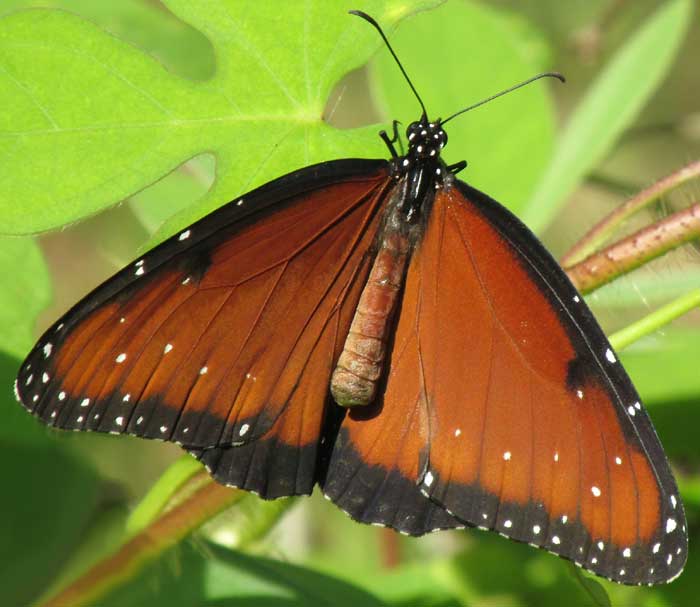Excerpts from Jim Conrad's
Naturalist Newsletter
from the August 28, 2016 Newsletter issued from Hacienda Chichen Resort beside Chichén Itzá Ruins; limestone bedrock; elevation ~39m (~128ft), N20.675°, W88.569°; central Yucatán state, MÉXICO
QUEEN BUTTERFLY
In early morning's brilliant, low-slanting sunlight, an orange and black butterfly perched with her drooping wings directly facing the sun, quietly basking. You can see her below:

I'm not sure why she droops her upper forewings, covering most of her hindwings, but other pictures on the Internet show her doing the same thing. In southern Texas we've seen this same species, so other views are shown on our Texas page, at www.backyardnature.net/n/a/queen.htm
This is the Queen, DANAUS GILIPPUS, somewhat similar to North America's famous Monarch, Danaus plexippus, belonging not only to the same butterfly family but also to the same genus. It's a little smaller than the Monarch. Caterpillars of the two species also are very similar. As with Monarchs, Queen caterpillars feed on various kinds of milkweeds, many species of which contain powerful compounds called cardiac glycosides. The glycosides are stored in both the caterpillars' and adults' bodies, and experts tell us that they're distasteful, and give diarrhea to birds and other vertebrate predators who eat prey containing them. The reason for retaining cardiac glycosides in your body are obvious: a bird probably won't eat another of your species after tasting the first one.
Queens are distributed from the extreme southern US south through tropical lowlands of the Caribbean area, Mexico and Central America, to Argentina. In the US, rarely they stray north along the Atlantic Coastal Plain to Massachusetts.